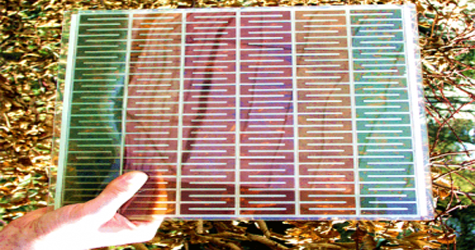Two groups of researchers have recently advanced the field of solar cells with a cheaper and efficient replacement for platinum and better synthesis of zinc oxide.
Working on dye-sensitized solar cells — researchers from University Malaya (UM) and National Tsing Hua University (NTHU) have achieved an efficiency of 1.12 %, at a fraction of the cost compared to those used by platinum devices.
This work has been accepted for publication in the journal, Nanoscale published by the Royal Society of Chemistry and has been selected for the front cover of the issue.
The study carried out in Taiwan took on the challenge of making the technology behind dye-sensitized solar cells more affordable by replacing the costly platinum counter-electrodes with bismuth telluride (Bi2Te3) nanosheet arrays.

A set of figures illustrating the effect of applied voltage during electrolysis on the spacing between nanosheets (bottom) and the corresponding variations in electrical properties (top).
For more on this article: http://www.sciencedaily.com/releases/2014/04/140422120759.htm
Source: Science Daily/Toronoto








